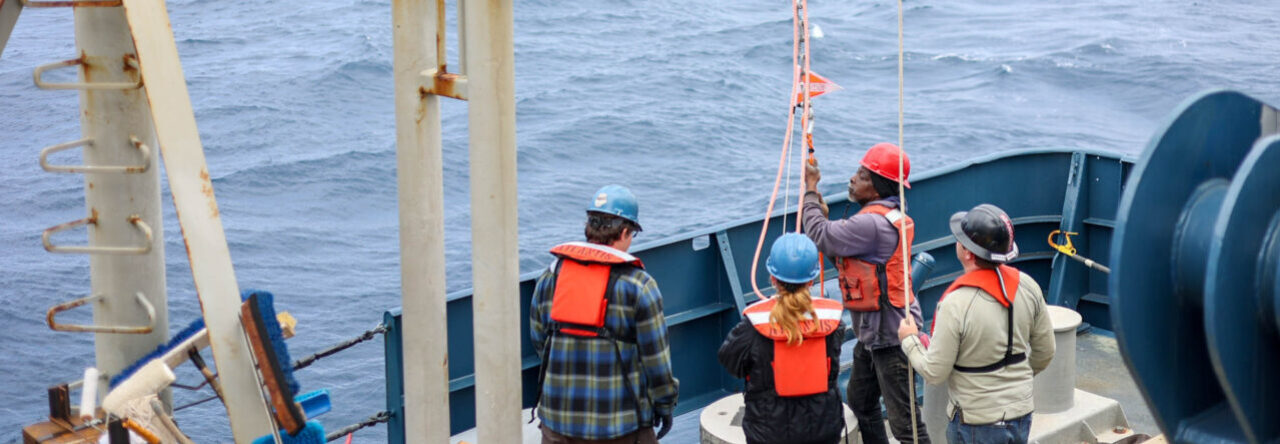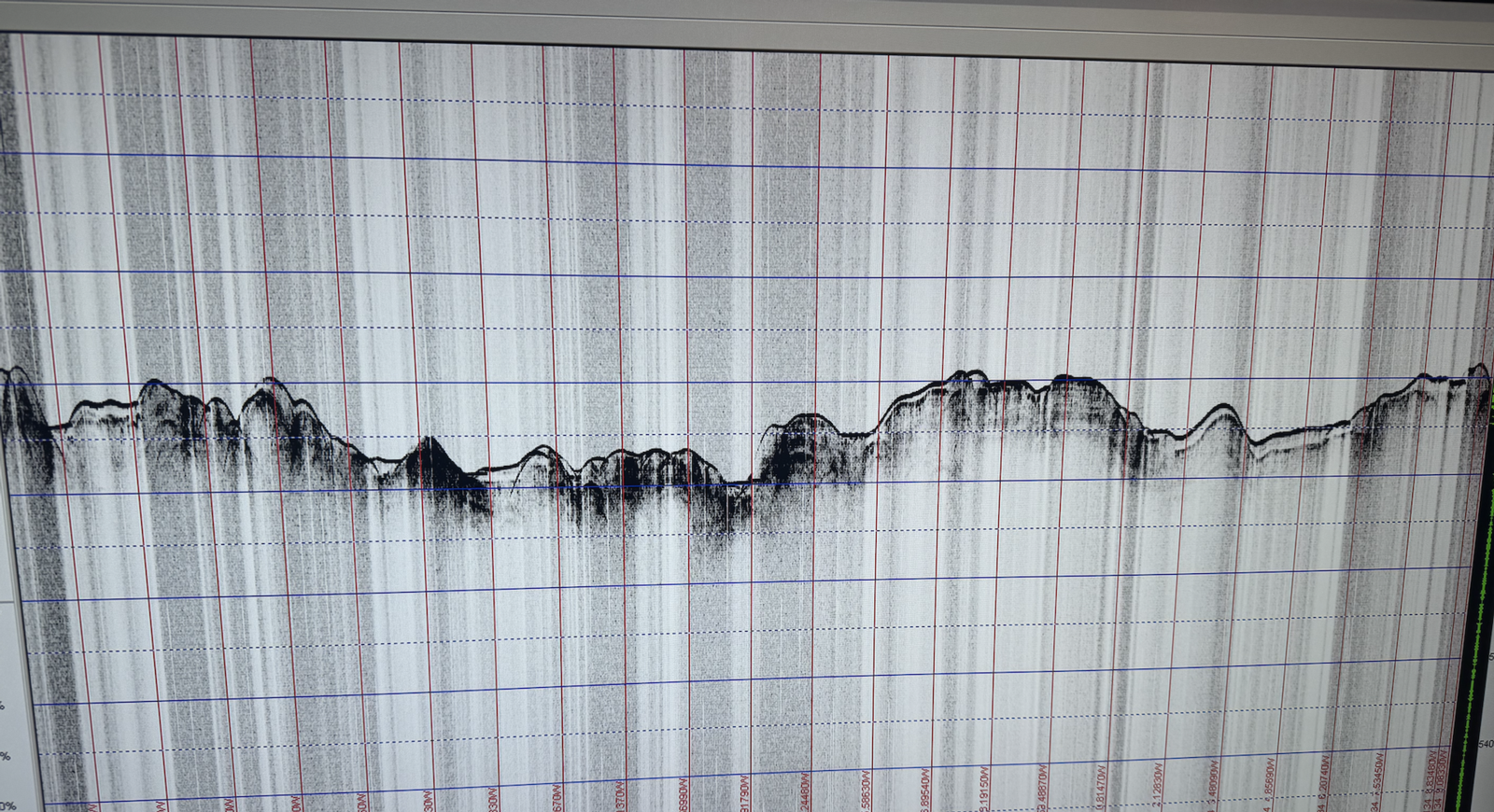 Bubble Troubles: Week #9 12/02/2024 – 12/09/2024
Bubble Troubles: Week #9 12/02/2024 – 12/09/2024
On Nov 28th, we set sail back to Honolulu, HI. While underway, we’ll be mapping a remote corner of the ocean using the Acoustic Doppler Current Profiler and a magnetometer for Dr. David Sandwell from the Scripps Institute of Oceanography. His team is interested in studying gravity anomalies called Haxby Lineaments and seeks to figure out the origin of these features using Sound Navigation and Ranging (SONAR), the Acoustic Doppler Current Profiler (ADCP), and a magnetometer. The SONAR and ADCP are already on the ship, but the magnetometer is towed from the back of the ship in the regions of interest.
Dr. Ali Chase, Hunter, and I have also been keeping busy cleaning different instrumentation: AC-S, HYPER BB, ALFA, FRRF, LIIST, pySAS, multispectral radiometer, and IFCB. I’m still trying to wrap my mind around what each instrument does, but I do know that they are orchestrated together to help build a comprehensive picture of the properties of microscopic organisms like plankton and debris taken up by the ship’s underway seawater collection system.
Every morning, we clean the pySAS instrument, making sure that it is clear of salt crystals and debris that may have become entrapped on the lenses in the past 24 hours. Then we also climbed up to the top of the bridge and clean the Hyperspectral Radiometer with a 5-meter pole, sponge, and lens paper to fight the wind and also dust off any salt crystals on the instrument. In the evenings, we alternate between cleaning the AC-S, LIST, and HYPER BB every other day, and we clean the ALFA and FRRF instruments daily. While maintaining these instruments, we also clean the optics of each sensor with thin lens paper, alcohol, and Milli-Q water, as well as running Milli-Q water to hopefully push out anything that may be trying to grow inside the tubing.
Another thing to keep an eye out for is bubbles. I had never given much thought to bubbles or their effects until I hopped on board the RV/Kilo Moana. Although fun to blow, bubbles can be quite troublesome when they get into your instrumentation or experiments. In the case of Dr. Alison Chase, bubbles inside your instrumentation must be avoided at all costs. Bubbles can cause light to scatter differently, which is not what you want when you’re studying backscatter using the HYPER-BB. Bubbles can change the flow of things, causing instruments to overheat due to not receiving the proper amount of flow. This happened multiple times to the ALFA, halting data collection for a couple of hours each time. In the case of the Imaging Flow Cytobot, the resolution of the phytoplankton images for several samples shifted and was reduced. Thankfully, Dr. Ali Chase caught the issue quickly, and we were able to fix it by running a debubbling procedure. This entails stopping the IFCB, plugging the intake line with soap, and letting the soap flow through for about 5 minutes to pop and push through the bubbles.
In the meantime, I’ve been reading manuals of the different instrumentation we’ve been maintaining, learning to code in Linux, and starting to learn more about how the ship is networked. The days left on the RV/Kilo Moana are starting to dwindle, so I’m trying to learn as much as I can before departing. I’ve been talking more to the crew and asking them the specifics of their jobs as well as taking in as many sunsets and night skies as possible.
Cheers,
Briana

– Magnetrometer profiles
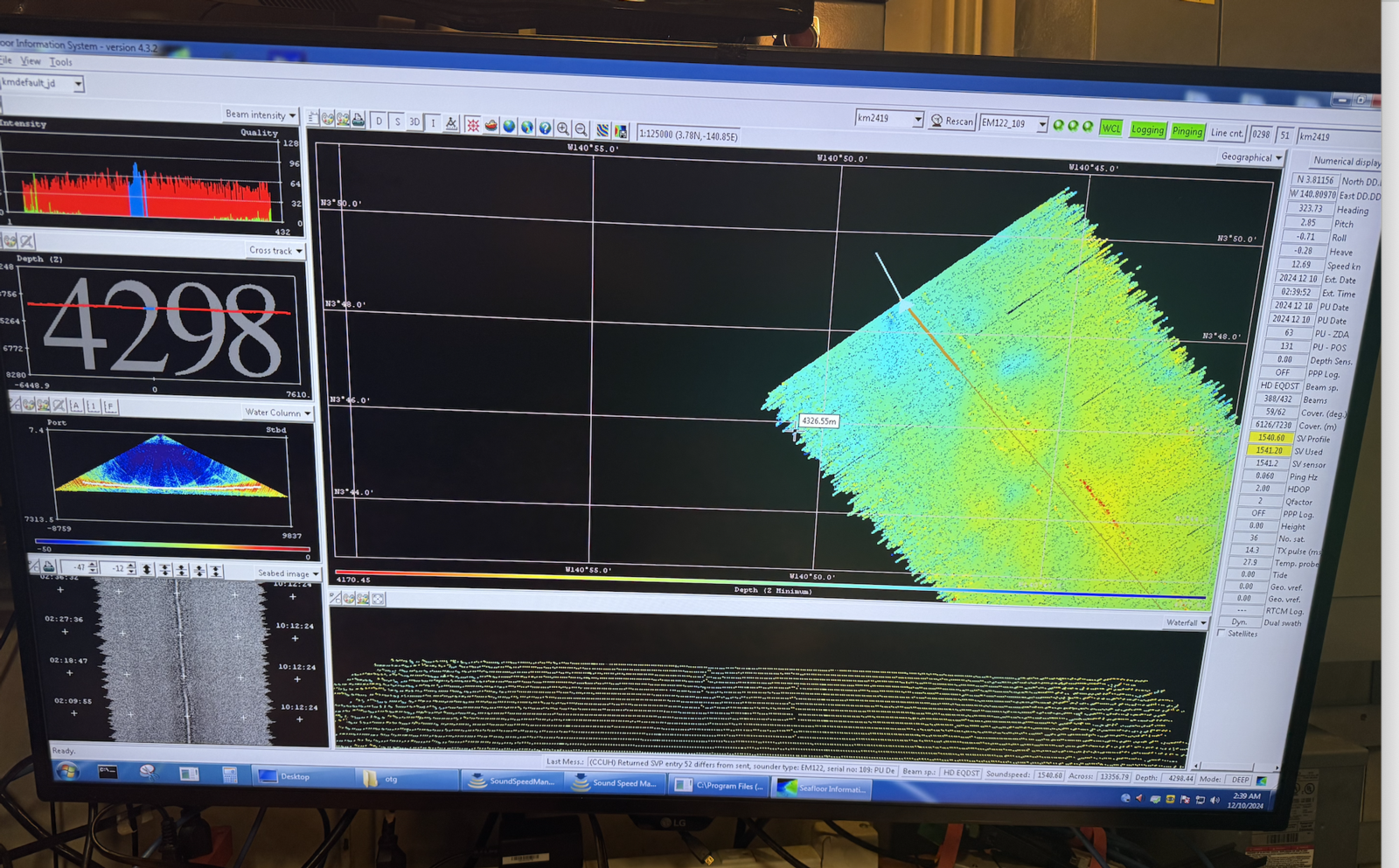
– ADCP that remains on during the duration of the transit and later uploaded to Google Maps and other data bases!

– Magnetrometer after a succesful mapping session
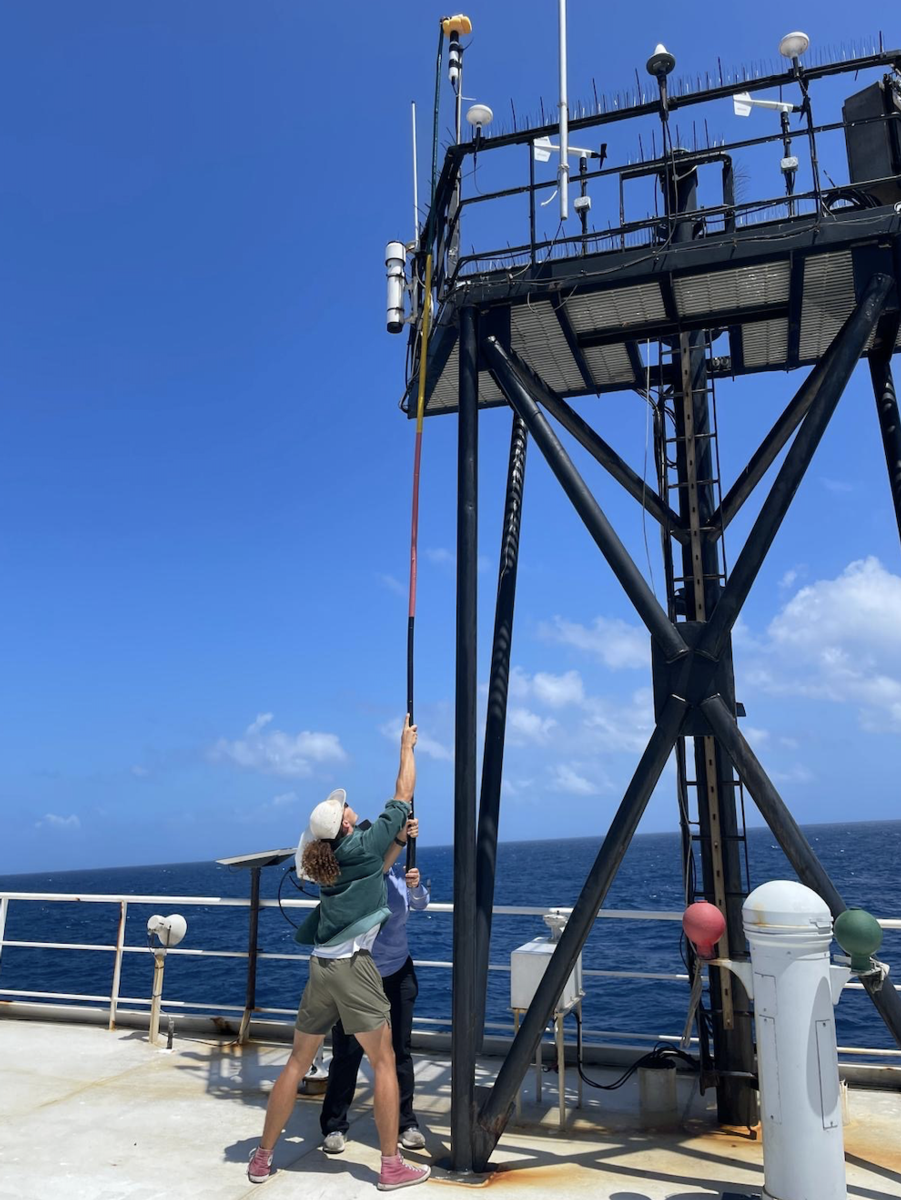
– Hunter Adams and Briana Prado cleaning the Hyperspectral Radiometer ontop of the Bridge
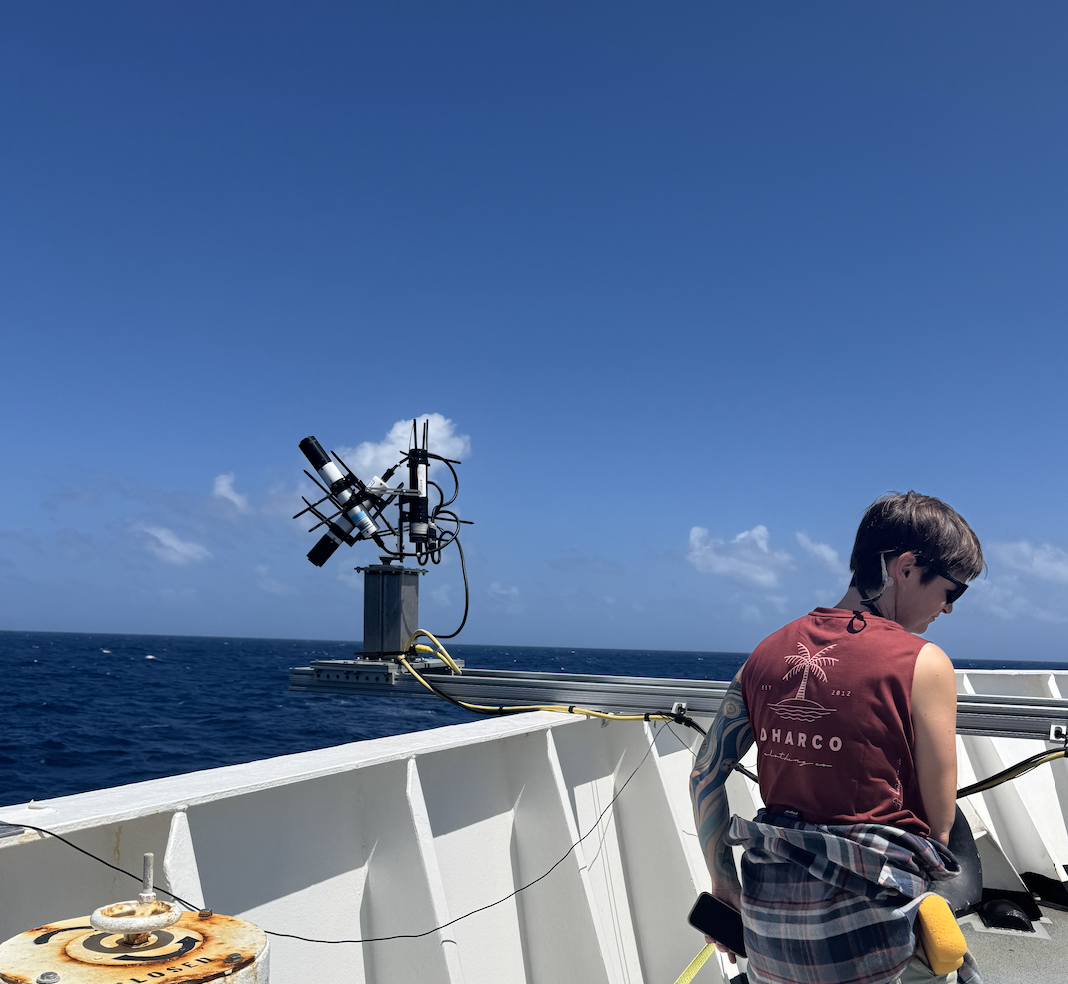
– Dr. Alison Chase cleaning the pySAS early morning
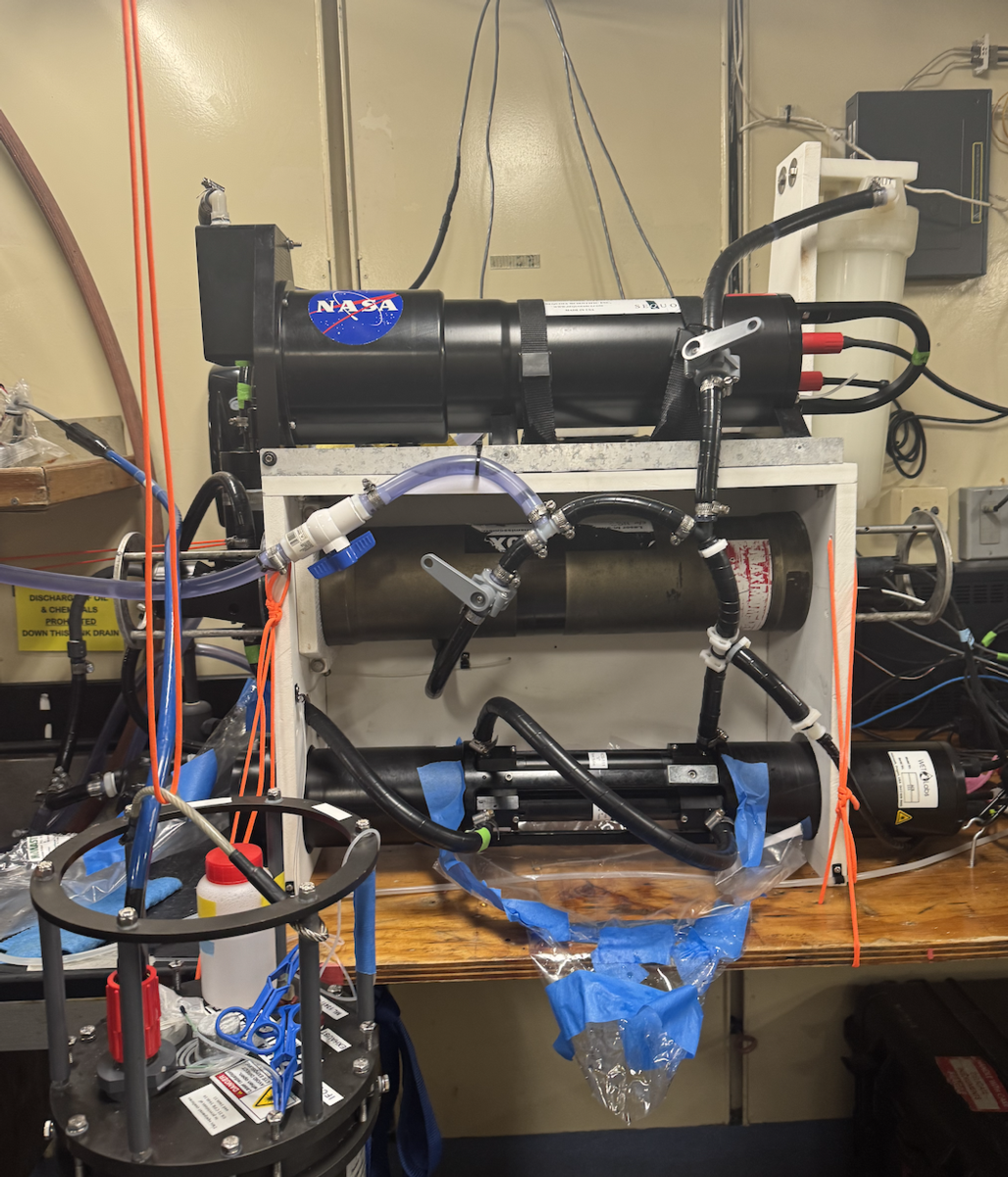
– Top to Bottom: HyperBB, LIIST, AC-S and IFCB instruments which we clean regurlarly
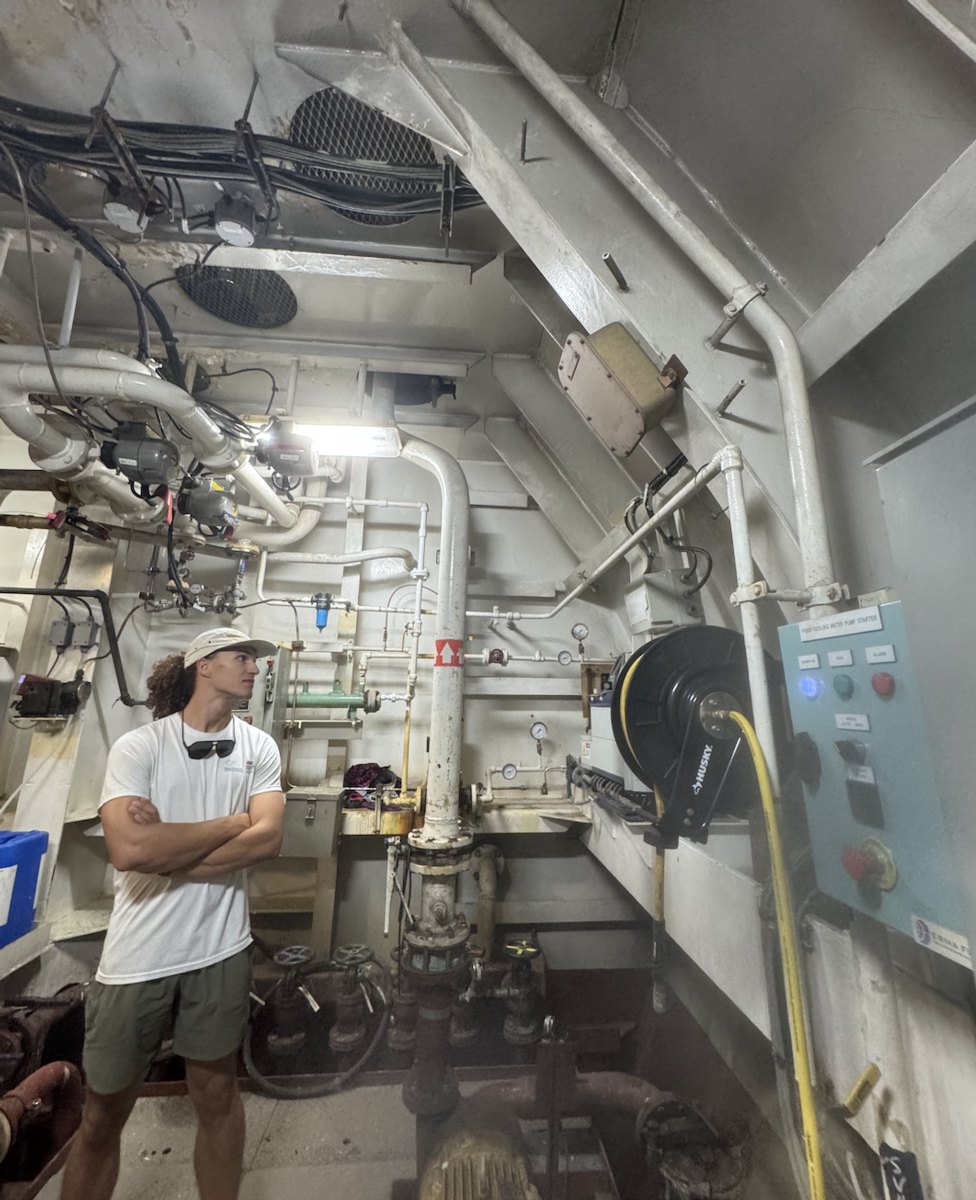
– Hunter Adams and I receiving a tour of the inner workings of the ship by Chief Engineer

